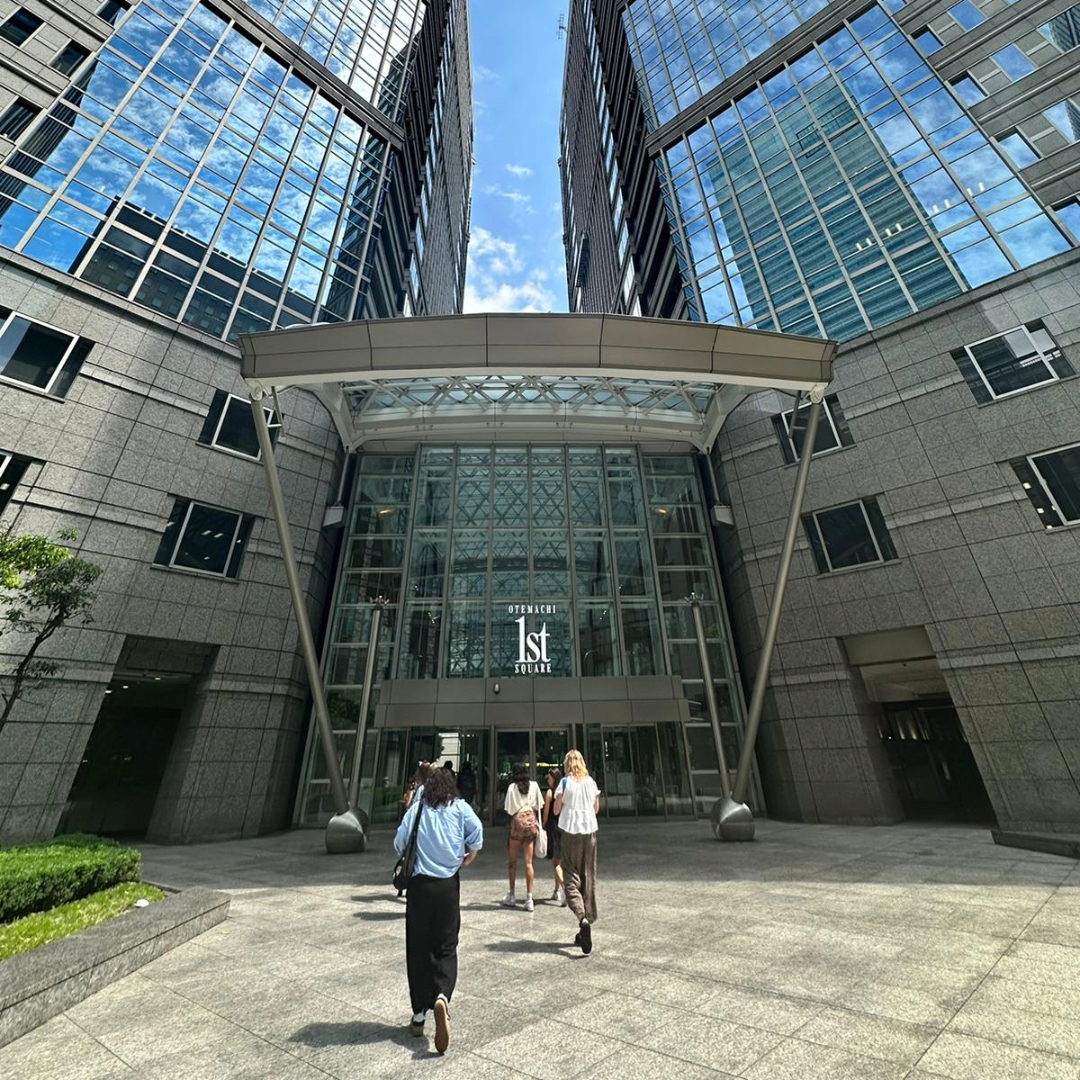
After a night of karaoke, many students explored different options for breakfast in preparation of the day’s upcoming visits to Rikkyo University and the Tokyo bureau office of the Wall Street Journal.
After a short ride on the train, the group made it to Rikkyo University located in Ikebukuro in central Tokyo. The university was founded in 1874 by Anglican Bishop C.M. Williams and has a charming and historical feel. With its exposed bricks and immense greenery in the courtyard, students were in awe of the perfectly pruned landscape and towering trees surrounding the university. A distant sound of an organ playing from the campus chapel greeted students as they approached the building.
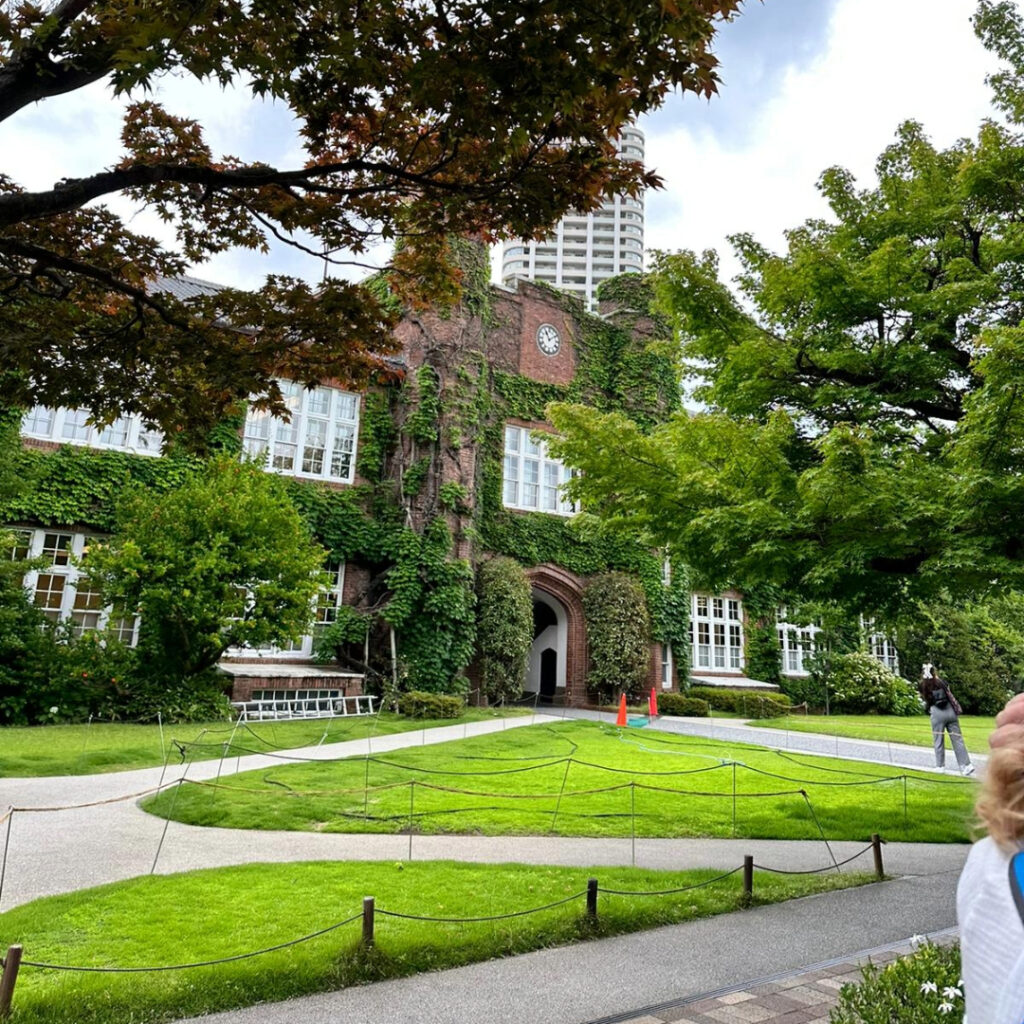
As students entered the Global Lounge on campus, they were welcomed by Jacob Bowdle, Global Lounge supervisor at the Rikkyo University International Office. Bowdle shared information about the university’s programs and noted that enrollment includes 20,000 students with 1,000 graduate students and about 1,000 international students from over 70 countries around the world with courses offered in both English and Japanese.
After initial introductions and greetings, students were split into groups which encouraged students to get to learn more about one another such as sharing their favorite hobbies, music and major. To break the ice further, students played a game of two truths and a lie. This seemed to relax students as smiles and laughter could be heard around the room.
In order to connect on a more personal level, students stayed with their respective groups and toured the campus with a Rikkyo student guide. They visited university dining halls, study areas and the library. Many students bonded over the “college experience” and found out interesting facts about the university.
Students were surprised to learn about Rikkyo students’ schedules that varied vastly with their own.
“What shocked me is that they are taking eight classes,” Kimberly Garza, public relations senior, said. “They have classes on Saturdays. All their assignments that they do, they do it in school, and they don’t do it outside of school like how we do it.”
Despite these differences, college life in Japan versus the United States is similar in other ways. Students found that Rikkyo students had jobs, commuted and played sports just as we do back in the States.
Saya Ito, Rikkyo University sociology major, plays tennis and works part-time as a restaurant server while maintaining a social life. These are experiences all students in the group share one way or another.
As students wrapped up the tour, Texas State students had a sweet surprise for the Rikkyo University students. Encouraged by SJMC Japan Academic Program Director Gilbert D. Martinez, students brought candy from Texas to share as omiyage, the Japanese custom of gift-giving.
“I know that gift giving is a big thing here, and I love doing it on my own,” Garza said. “It was a very special moment doing that. I chose Jolly Ranchers because it’s my favorite American (candy), and I’m Hispanic and I grew up on these Mexican lollipops, so I just wanted to give them a little piece of what I grew up with as a kid.”
After the special moment, students were invited to dine with one another. This particular moment left many of the Texas State students in excitement, as they were able to encounter first hand the experiences Rikkyo students live. Some went to neighboring restaurants while others opted to eat on campus.
As those on campus entered dining halls, the process of ordering was explained to them and is very different from the style of ordering food on campus at Texas State.
Saya explained that one orders and pays through a machine with buttons that correspond to the foods on the menu. A ticket is then dispersed from the machine, prompting kitchen staff to prepare the meal.
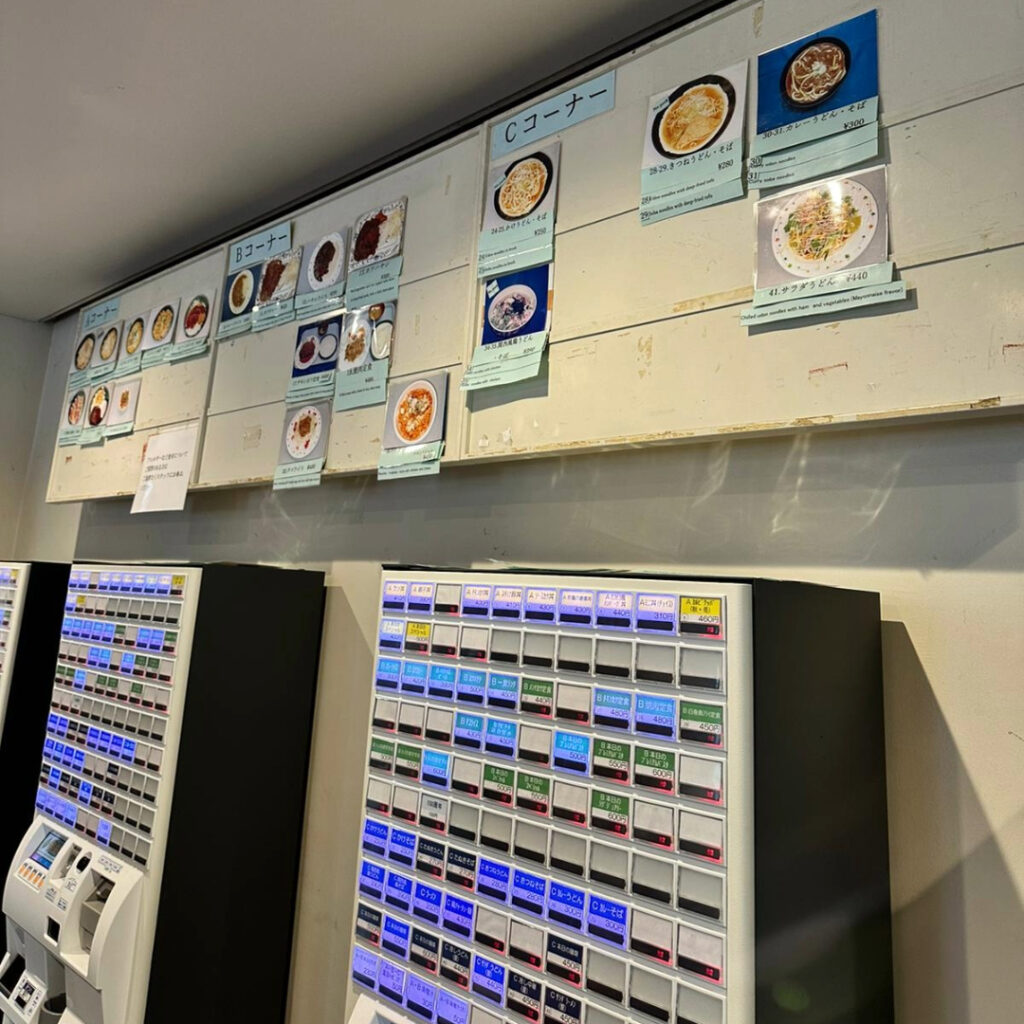
Elise Kadison, advertising major, ate lunch at the dining hall and experienced it first-hand.
“So many options for food, and the ordering system is very remote,” she said. “They already have the stuff made so they will just put it on your tray for you. It’s very quick and easy. If you’re a picky eater, you can find something to eat, for sure.”
Other students, such as Abigail Tuttle and Elian Reyes, followed recommendations by Rikkyo students and had Hawaiian food off campus, for example.
The visit to the university proved beneficial as many students decided to continue to connect via social media. The connections made led to many sharing their Instagram handles to keep up with one another. Goodbyes were bittersweet as many of the students had hoped to spend more time with the Rikkyo students, especially after getting a glimpse into their daily lives that are so similar yet different.
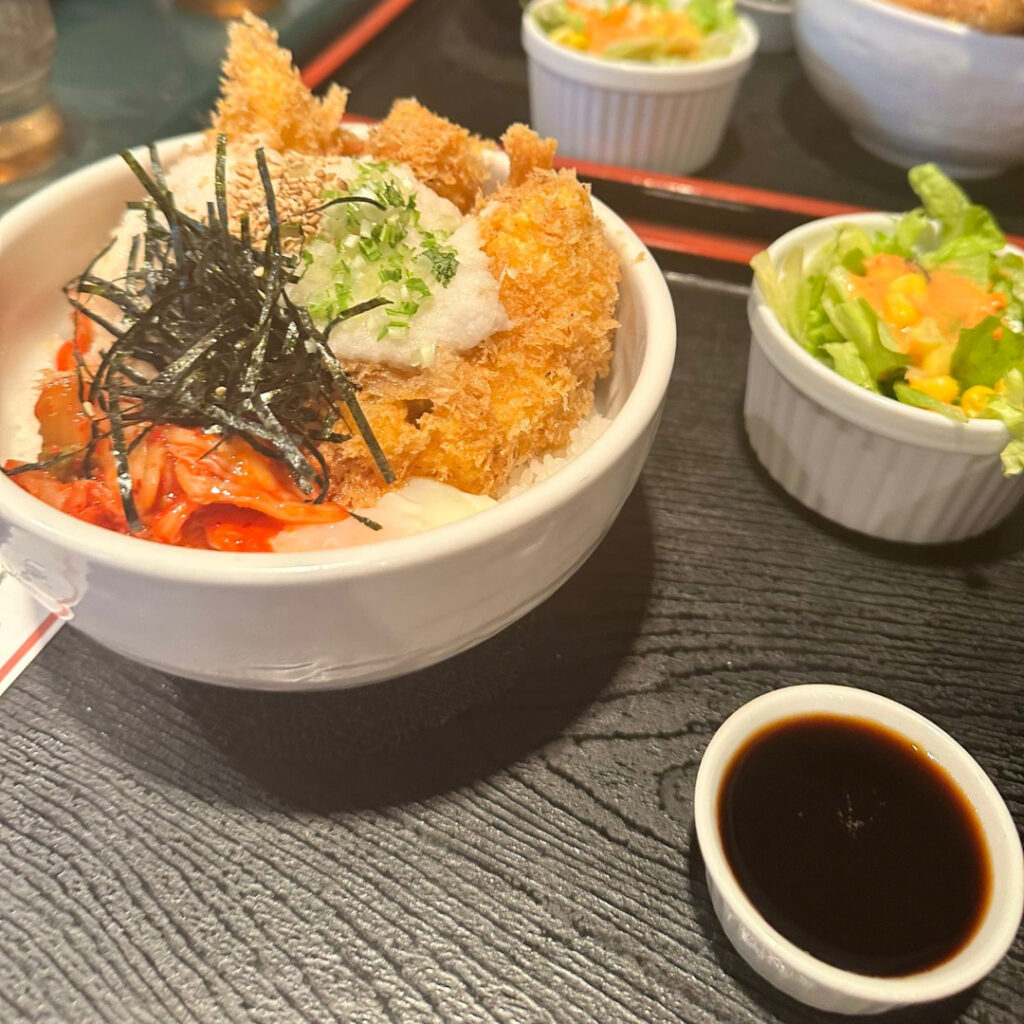
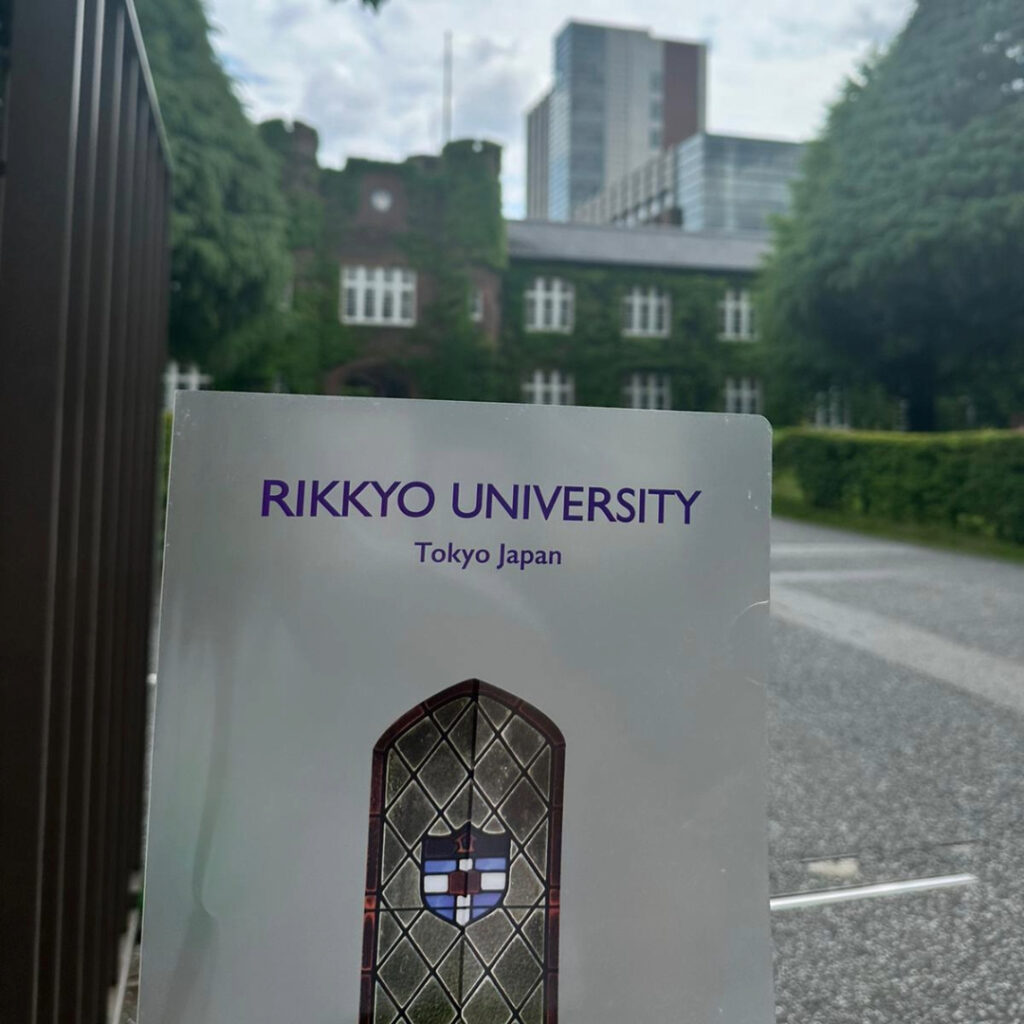
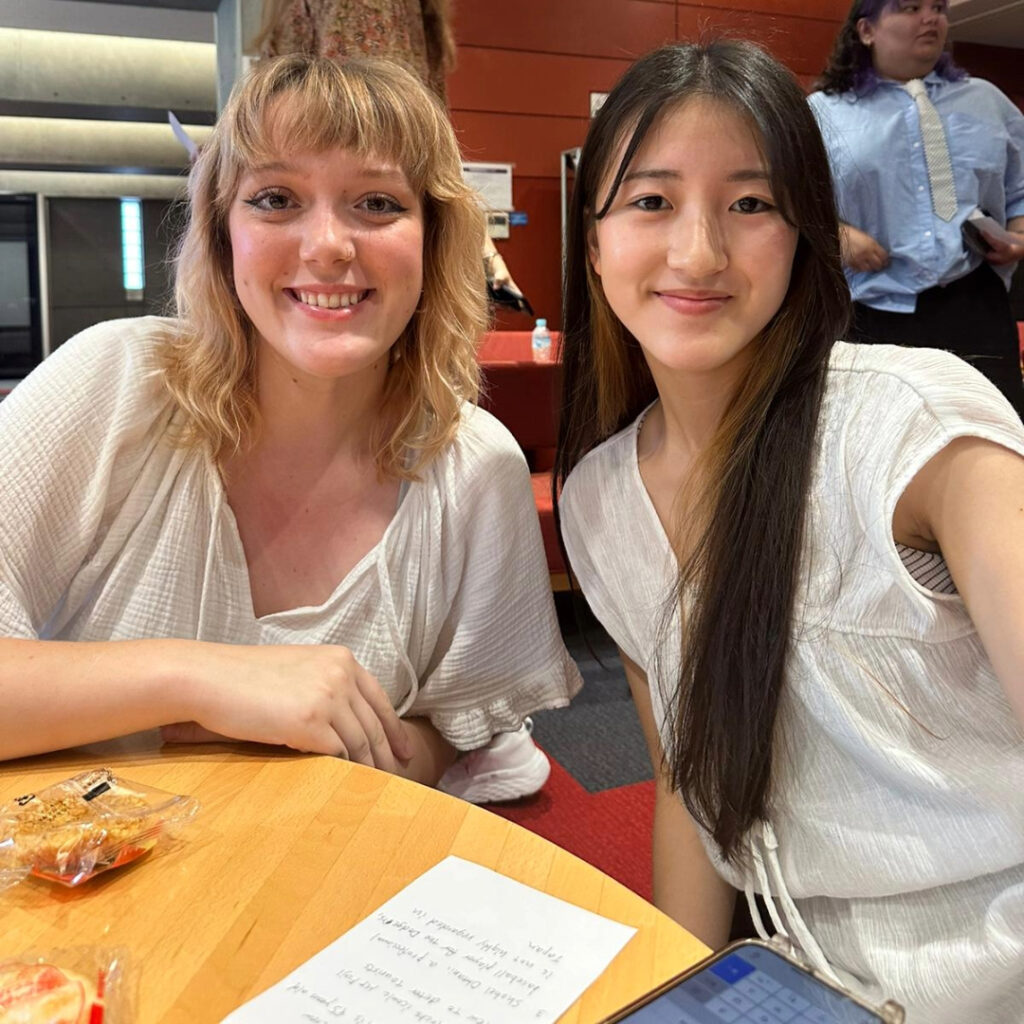
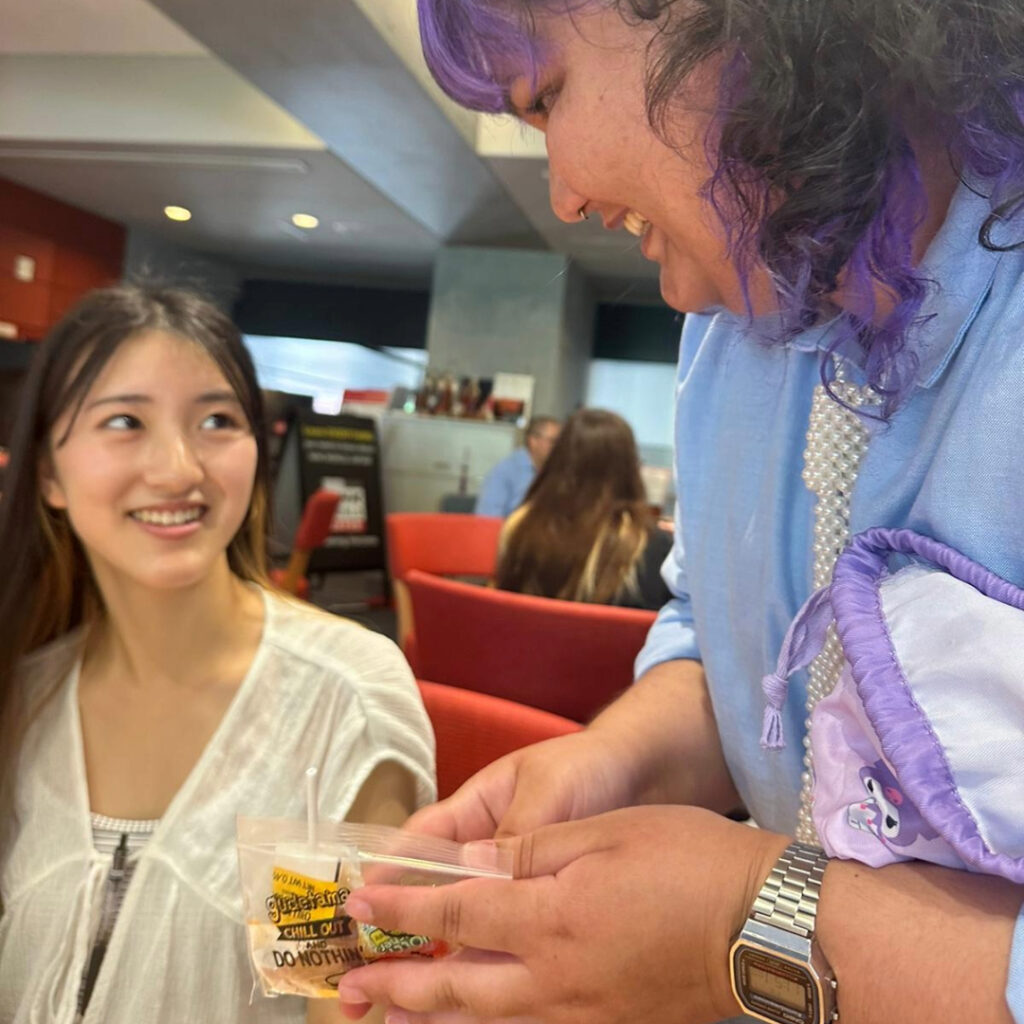
Students left with a deeper cultural understanding of the Japanese college experience as the group got ready to trade a college campus for corporate skyscrapers to learn on a professional level at the Tokyo bureau office of the Wall Street Journal.
Students from the SJMC program picked up the pace to ensure they were not late as punctuality is key in Japan, where being on time is considered late and on time is considered being early. The group met with Tokyo Bureau Chief Peter Landers, who shared his professional advice emphasizing keywords in the organization’s coverage that can be applied to any media landscape. Timely, expert, revelatory and relatable are central to the mission of the Wall Street Journal, he said.
“It’s hard to summarize our mission in a few words, but I think some of that is about the relatable element of it that we’re talking about,” Landers said.
Landers gave insight on the importance of understanding audiences, staying relevant in a competitive and ever-changing landscape of media and capitalizing on the day-to-day experiences of readers to stay relevant as media are read around the world.
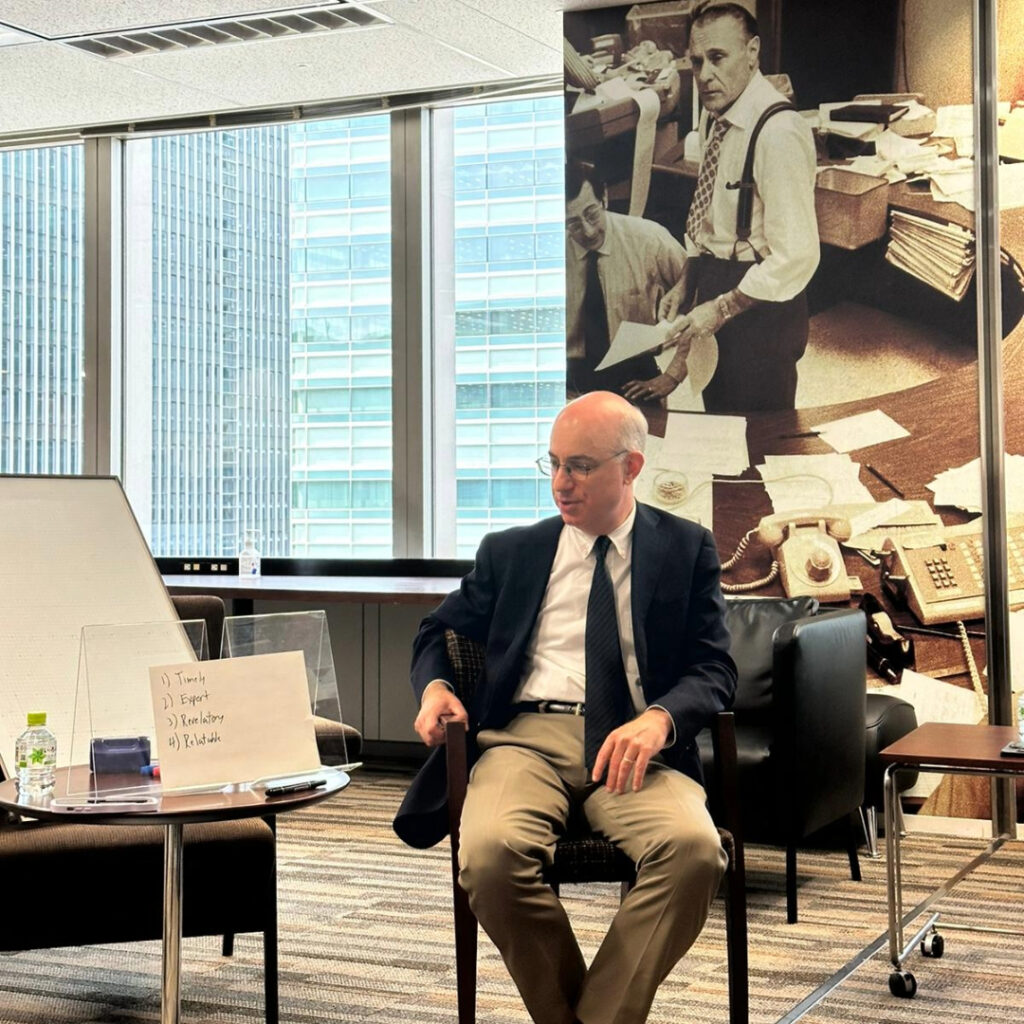
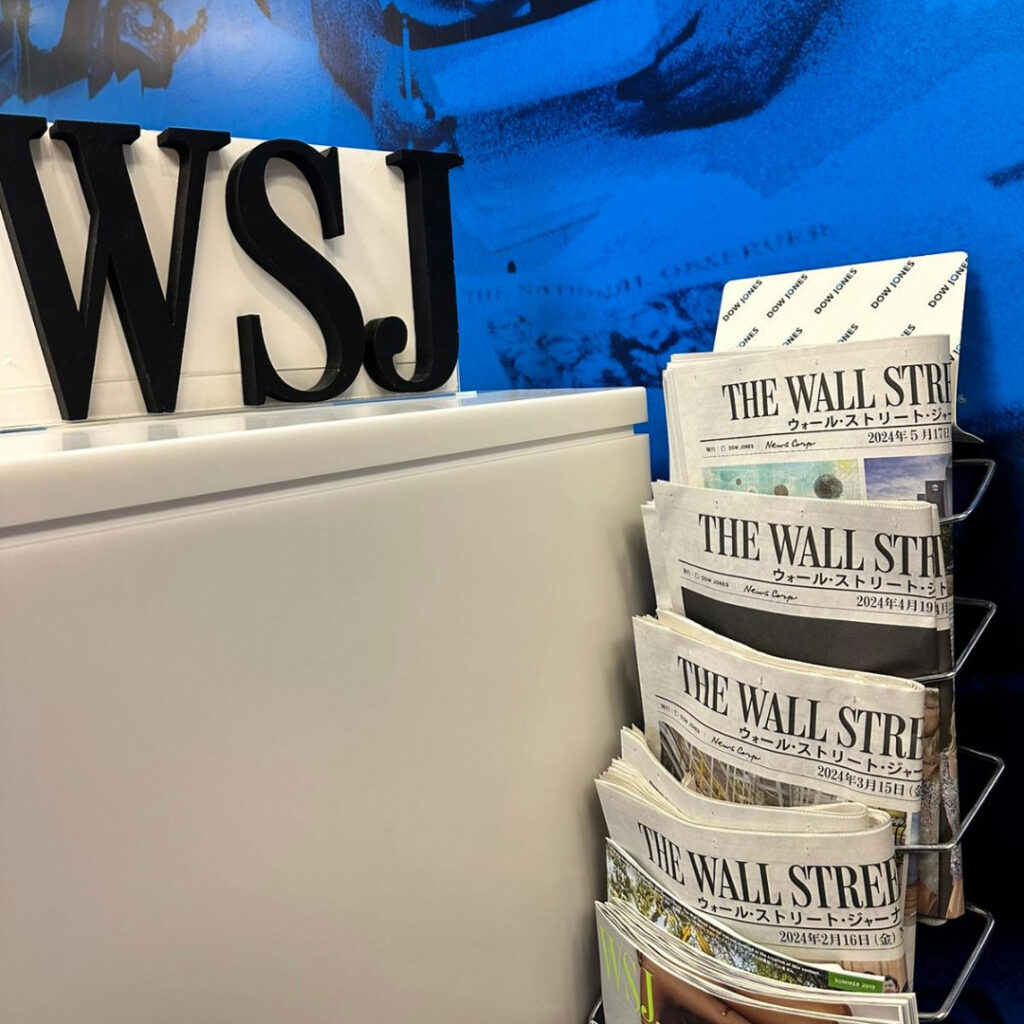
“Any news organization that’s updated 24-hours-a-day, and our website is constantly to have people on on duty round the clock some place on the globe,” Landers said. “Whether it be here in Asia or London or New York. So timeliness is important.”
“We want to make stories relatable,” Landers said. “That means writing about the people in the news and more.”
Landers also shared the news organization’s new motto: “It’s your business.”
Students were given the opportunity to ask questions regarding his professional opinion of artificial intelligence and navigating polarized topics in the newsroom, with a central theme of sticking to the facts and never jeopardizing timeliness for accuracy.
Despite the successful professional visits, the group had one hiccup traveling from Rikkyo University to the Wall Street Journal on the subway. One SJMC Japan student hopped off the train and realized too late that the student’s backpack, including a laptop computer, was left on the overhead rack in the train. The student watched helplessly as the train departed the station.
Asia Institute guides were quickly notified and inquiries were made to figure out what to do. Meanwhile, the group was hustling to meet their appointment time at the Wall Street Journal. After speaking with train officials, Asia Institute guide Gin Yu told the student that they could return to the train to see if they could find the backpack or stop at each subsequent station to see if someone turned it in.
Martinez told the student that of all the countries to forget a backpack with a laptop computer on a train, there’s probably not a better country to do so than in Japan, which is renowned for lost items being recovered beyond all hope.
It wasn’t until shortly after the end of the visit with the Wall Street Journal that Yu and the students discovered that a good Samaritan had dropped off the backpack at a subsequent train stop. The entire group breathed a collective sigh of relief and joy for the student, who was reunited with the backpack and laptop.
Overall, it was a day full of learning about different perspectives, personal and professional, within the culture of Japan. Looking forward, we have two full days left in Tokyo, with visits to Tokyo Tower, Shibuya and the Tokyo Fire Museum on the schedule for Saturday.





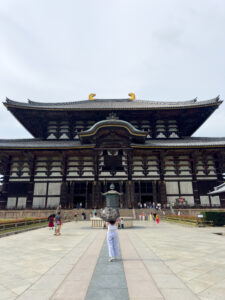
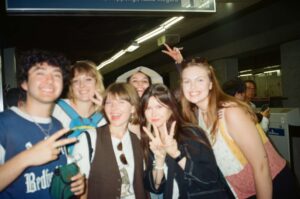
This is all so fascinating to read & learn about! Thank you for sharing all the fun details of your professional day on campus and at WSJ.
Thanks for sharing ! Interesting post and I really enjoyed all the fun interactions you all had with Rikkyo’s students. What an amazing experience.